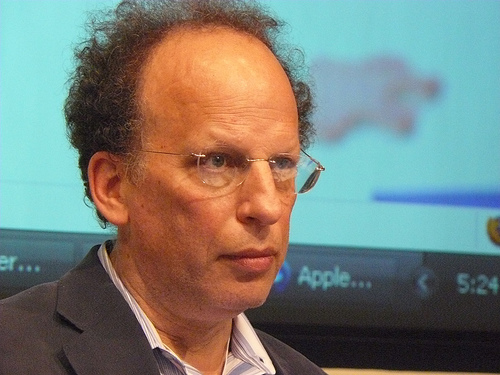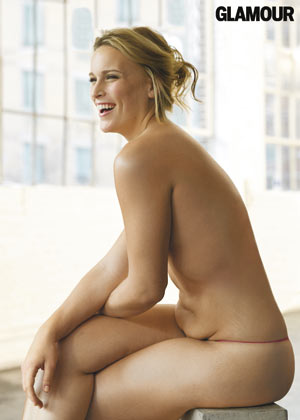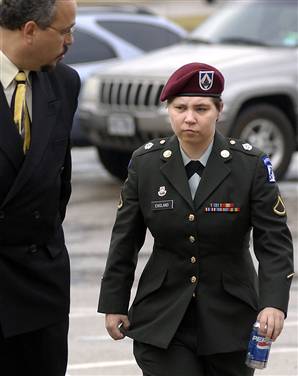There is a very interesting debate going on at the moment in the US blogosphere and press over the New Museum's series of upcoming shows entitled the "Imaginary Museum." The stir is caused by the fact that this series of exhibitions will be based around private collections, the first of which belongs to Dakis Joannou and will be curated by Jeff Koons, who features heavily in the collection. Tyler Green has been covering this issue for several weeks and it is now spilling over into the mainstream press. It raises some very interesting questions about how museum exhibitions get made these days and the broader realities of today's art world. This is something I have written about before and it seems that the situation is not exactly improving. I highly recommend following all of this on MAN.
Photography has died (again)
 A couple of weeks ago I attended a talk at the American University of Paris given by Fred Ritchin, the author of After Photography, who has been thinking and writing about the future of photography in the digital age for longer than most people. The session was tantalisingly entitled Photography and human rights, but mercifully it was far more interesting than the title suggests.
A couple of weeks ago I attended a talk at the American University of Paris given by Fred Ritchin, the author of After Photography, who has been thinking and writing about the future of photography in the digital age for longer than most people. The session was tantalisingly entitled Photography and human rights, but mercifully it was far more interesting than the title suggests.
His talk (given in total darkness so that we could see the slide show that he had prepared), was much like the man's career: it darted off in several directions at once, with ideas constantly being eaten up by new ones. While I did will him to slow down on more than one occasion, his rapid-fire thought-process is fascinating and the quantity of ideas that get thrown at you at once are in keeping with Ritchin's message that we need to wake up and smell the digitally enhanced coffee.
In his view (one which I share) slick, glossy photo-journalism is antiquated and only has a minuscule impact on the contemporary audience. In recent times it has been replaced by 'citizen photo-journalists' taking photos with whatever cameras they have to done. Somewhat strangely, poor quality, pixelated, uncomposed images have become a mark of authenticity, some kind of indication of a raw truthfulness. In the era of reality TV we want images made by insiders not outsiders, no matter how good the latter are.
Ritchin's central thesis is that we are lagging way behind technological innovation in terms of the way we use photography to address issues of human rights and more broadly issues of sustainable development. He illustrated this idea by a number of image-related tools (not all of them photographic), which Ritchin sees as having huge, virtually untapped potential: Google's Street View, Photosketch, Photosynth, etc. One great example of the use of technological innovation to make photography do something completely new and actually useful is the Extreme Ice Survey, a project that provides visual proof of how the glaciers are melting using time lapse photography.
I had to keep stopping myself from thinking about Ritchin's propositions in the context of fine art photography, which is where I spend most of my photographic time, because these are ideas that are centred around press or, more loosely, documentary photography.
Overall, while I don't agree with Ritchin's doom-mongering message that press photography is all but dead, I think he is right in his provocative call for shaking things up and, more importantly, for making use of the amazing technology that already exists. This applies far beyond the realm of photography to much of web 2.0's innovations, particularly to social networking. If we could get Facebook to be about more than looking at drunken photos of college frat parties or throwing virtual sheep at each other, it could potentially make some kind of difference.
Further reading: for some reasons why photography may not be entirely dead, try reading these Asian photographers' answers to the question, "Why photography now?"
A picture of a woman
 I don't normally write about fashion photography on this blog, or go out of my way to see fashion images. E doesn't really buy magazines so it's not lying about the house either. But like any other person living in a big city, fashion photography is absolutely everywhere, something that we practically breathe in every time we step outside. In the case of major women's magazines, I find the images that they publish to be almost invisible given how repetitive they are.
I don't normally write about fashion photography on this blog, or go out of my way to see fashion images. E doesn't really buy magazines so it's not lying about the house either. But like any other person living in a big city, fashion photography is absolutely everywhere, something that we practically breathe in every time we step outside. In the case of major women's magazines, I find the images that they publish to be almost invisible given how repetitive they are.
The unhealthy fetishisation of thinness in fashion and women's magazines is not exactly breaking news. Angry opposing voices have been heard for some time on the issue, but little has changed except that we are probably likely to see more ultra-thin model flesh than before. When I came across this image (not flipping through Glamour magazine unfortunately, but on the Guardian website), it stopped me in my tracks. For a split-second I wondered whether this little belly had been photo-shopped onto this woman's body? That first reaction quickly turned into amazement. Amazement that I couldn't remember having seen another image like this, that this image of a woman whose body is just slightly closer to some form of reality could possibly be this unusual, that people are actually having a debate about whether this woman is fat, that I could have had such a ridiculous sub-conscious reaction. As the author of the article suggested this image being published definitely shouldn't be newsworthy, but unfortunately it is.
As an aside I find it highly amusing that an article written to highlight the ridiculous body image standards of women's magazines should have the following url: www.../lizzie-miller-model-fat
On lists
 I have recently come across a couple of 'best ever', 'must-have', 'unmissable' lists that have given me food for thought... quickly resulting in indigestion. The first of these is a list of the top 10 photo-journalists of all time and the second, a list of the 26 (nice random number) books every photographer should own.
I have recently come across a couple of 'best ever', 'must-have', 'unmissable' lists that have given me food for thought... quickly resulting in indigestion. The first of these is a list of the top 10 photo-journalists of all time and the second, a list of the 26 (nice random number) books every photographer should own.
This kind of thing is definitely not confined to the world of photography, as anyone who has spent an evening watching TV in the UK will know. I don't particularly like these top-10-50-100s, but I generally still succumb to the urge to see who comes out on top, even if only to then dismiss the thing completely. And so I did go through the top-10 photojournalists of all time and shortly afterwards went to find out what the 26 holy grails of books relating to photogaphy might be. And despite being promised some sort of photographic enlightenment, the experience just left me feeling depressed.
I don't really want to argue the merits of calling Robert Frank a photo-journalist or ranking Zoriah Miller above Don McCullin and Eugene Smith. And I certainly am not running to my nearest photo-book store to grab the last remaining copy of Galen Rowell: A Retrospective. In fact I would like Lindsay Adler to consider what planet photography would be like if every photographer owned those 26 books that she picked out.
Instead I want to make a plea to any photo-bloggers or journos out there who are wondering what to write about next. If you have a big stack of books at home that you recently arranged into order of preference, or simply have absolutely no inspiration whatsoever, just put down that keyboard. Instead why not go out and discover one photo-book or one photographer that will blow your mind and look at their photographs for hours on end before writing the greatest eulogy ever, or think about what the hell this thing called photography is all about now that newspapers and magazines are dying and digital is replacing everything else and everyone has tiny little cameras that they use to photograph everything all the time, or even go outside into the world and take a photograph, just the one.
With most of the posts that I publish, I'm never sure whether they are adding anything except another voice to the cacophonous mix. But I am sure of this: we do not need another list.
Abu Ghraib and Lynndie England
 Lynndie England is (thankfully) no longer a hot topic, but I was reminded of her story by this week's episode of the consistently excellent This American Life. For those of you that haven't switched on a TV or read a blog (or one of those newspaper thingies) in the past year, England was one of the US soldiers that was photographed humiliating naked Iraqi prisoners in Abu Ghraib. One particular picture, showing her holding a leash tied around the neck of a naked prisoner lying on the ground, made her the poster girl for Abu Ghraib, and, to some extent, for the failures of the American approach to the Iraq War.
Lynndie England is (thankfully) no longer a hot topic, but I was reminded of her story by this week's episode of the consistently excellent This American Life. For those of you that haven't switched on a TV or read a blog (or one of those newspaper thingies) in the past year, England was one of the US soldiers that was photographed humiliating naked Iraqi prisoners in Abu Ghraib. One particular picture, showing her holding a leash tied around the neck of a naked prisoner lying on the ground, made her the poster girl for Abu Ghraib, and, to some extent, for the failures of the American approach to the Iraq War.
When the images of Abu Ghraib made it into the press, England rapidly became the principal scapegoat for the crimes committed by the US in the prison. She was perfect for the part: pretty much everyone, from both ends of the political spectrum, could agree on hating Lynndie England. The coverage unanimously condemned her, without paying much heed to her side of the story. Eventually, the journalist Philip Gourevitch and film-maker Errol Morris decided to interview her extensively for two separate (and equally excellent) projects investigating the events surrounding Abu Ghraib and, more importantly, their representation in the media.
This is what England had to say about the infamous photograph of Abu Ghraib: "I don't see the infamous picture from the Iraqi war. (...) Yeah I was in a picture showing me holding a leash around a guy's neck. But that's all I did, I was in a picture, I never actually did anything to them. I was convicted of being in a picture." (my emphasis)
I didn't write this post to pass judgment about England's guilt regarding what she did in Abu Ghraib. But I think that her statement is pretty much right. This image was set up for the camera: it is because there was a camera there that this event took place. It is extraordinary just how much power a single photograph can still have, even within the context of something like the Iraq War which was filmed, recorded, written about and photographed in real-time, more extensively than any other war in history. And yet despite this, perhaps the most famous image of that war is staged.
Last week, two French art students were awarded Paris-Match's annual Grand Prix du Photoreportage Etudiant for their photographic story documenting the precarious lives of students today and their struggle to survive. When they received the award (which has now been taken taken away from them) they revealed that the winning series had been staged in order "to reveal the codes used too often in photojournalism and to prove that something real can be translated into something staged." Interestingly, they also stated that they did this because they were art students and, had they been studying journalism, would never have allowed themselves to commit such an act. There has been some discussion of this in the blogosphere, and opinions are divided. However, in the light of stories like that of Lynndie England, the statement of these French students seems all the more relevant.
Further reading, listening and watching: Philip Gourevitch, The Ballad of Abu Ghraib Philip Gourevitch's segment on This American Life, episode 384 (fast forward to 18:27) Errol Morris, Standard Operating Procedure